Guests pull blankets tightly around them, covering feet and hands cracked and dry from the cold. For a few hours they find rest and a decent sleep, something that living on the street rarely provides. Today they can find refuge in a place that welcomes them. They can stretch out on benches and rest. Except where they sleep is not on benches but on pews in St. Boniface Church in San Francisco.
The image is striking—a city’s homeless population asleep on church pews, finding sanctuary in a church’s nave. This program at St. Boniface is part of the Gubbio Project, which provides blankets, hygiene kits, and socks to around 150 people who rest in the church each weekday.
The guests from the San Francisco streets are neither asked questions nor forced to fill out forms. They are able to sleep, warm up in the winter, or join the daily Mass. Most of all, the guests are welcome. On the street, many of the people experiencing homelessness are ignored or even abused, but they are welcome in St. Boniface.
The Gubbio Project began when people living on the street told church members they needed a place to stay during the day, says Doug Pierce, Gubbio Project board chair. Welcoming marginalized people to the holiest part of the church is a special spiritual element of the program, which operates in two churches, he says.
“It’s important to us that the housed and the unhoused share a space together,” Pierce says. Gubbio’s goal is to build understanding and community between the unhoused and the housed, two groups that often hold misconceptions about the other. For example, the housed often do not understand the daily trials faced by those living on the street. They do not understand what it takes to find proper food and shelter, day after day. But interactions between the two groups, even as simple as a short conversation, bridge that divide.
“The whole sanctuary becomes a tabernacle when it’s filled with the poor,” Pierce says. “The sanctuary is where Christ is.” The Gubbio Project is more than a humanitarian mission; it is a fundamentally Christian endeavor. And the program is not alone: Churches around the country are opening their doors to offer shelter to those in need. Programs like the Gubbio Project offer a unique service. Offering sanctuary in the same place the congregation gathers to worship is a direct response to the gospel call to invite strangers in and to give them something to drink and eat.
A place of refuge
The Christian church has long advocated offering hospitality to those in need. Many early sermons focused on Jesus’ call to help the homeless in Matthew 25, says Amy Oden, professor of early church history and spirituality at Saint Paul School of Theology. A couple centuries later, John Chrysostom, the archbishop of Constantinople during the fourth and fifth centuries, called on his parishioners to open their homes to the poor and homeless.
While today the word sanctuary means a place of refuge, religious or not, that definition only dates back to the mid-1500s. Before that, the original meaning of the word was a place set apart for worship, making the modern concept of sanctuary one that is woven into the theology and liturgy of our faith.
Today churches across the country and across denominations are making it a priority to live out that call to sanctuary, literally opening the church doors for those experiencing homelessness. By recent estimates, 564,708 people are homeless on any given night in America. And, according to the National Alliance to End Homelessness, in 2016 faith-based organizations provided more than 41 percent of the emergency shelter beds for adults and around 16 percent of beds for families.
Despite pushback from parishioners, safety concerns, and even looming fines, these ministries continue to live out their faith and welcome their neighbors living on the street because they believe that doing so is what it means to be Christian. Program leaders speak about the ability to care for the people they see beyond merely providing a bed. Unlike conventional shelters, these programs take a holistic approach to their care.
In New York City, just blocks from Fifth Avenue and Central Park, the Church of St. Ignatius Loyola continues a 40-year commitment to assist people experiencing homelessness. Homelessness in New York City is at its highest level since the Great Depression, with more than 61,000 people sleeping in the shelter system in April 2017. From November to April the lower meeting area of St. Ignatius houses 12 women, referred from a housing drop-in center, every other weekend. They arrive at the shelter at 7 p.m. on Friday and can sleep in the church basement for two nights, along with receiving hot meals. The shelter requires 21 volunteers each week, including two who spend the night in the church, says Pattie Hughes, shelter coordinator.
“By being in the same space as them, we’re telling them, ‘We love you,’ ” Hughes says. “Sleeping in the same space as these guests is like spending a night with God.”
Kids in the parish’s confirmation classes set up the beds, which exposes them to the truths of homelessness and how people of faith can respond, Hughes says. While the beds are always made, volunteers do not often change the sheets to offer a sense of consistency for the guests. Hughes says, “We want [the women] to feel comfortable, to feel at home.”
The space where the women sleep is cleaned every Sunday morning in time for the family services, but the area could also be rented out for profit. The Church of St. Ignatius Loyola is located on New York’s Upper East Side, a neighborhood where the median home price is $1,750,000 and the average household income is $311,109. The church could make $40,000 to $50,000 a weekend renting it out, Hughes says, but instead gives the space to the shelter program for six months a year without charge.
‘You just do it’
While church-run shelters across the country continue to make a big impact, their beginnings are often humble—simple programs with a basic mission of housing. But through time and interactions, these programs have grown to do more than provide a bed for a night, underlining the compassion of congregants and the importance of direct interactions with marginalized people.
Fort Collins Mennonite Fellowship in Colorado recently renovated its building to better serve the people sleeping there. More than 300 people sleep outside or in a shelter each night in Fort Collins, a quarter of whom are younger than 24 years old, according to a 2017 report.
In 2012 the congregation joined Faith Family Hospitality, a group of 30 churches and synagogues in Fort Collins that provides shelter and food for four families at a time throughout the year. Fort Collins Mennonite Fellowship hosts the families for five weeks a year, from 5 p.m. to 7 a.m. with dinner and breakfast, says Pastor Steve Ramer.
For the church, helping the less fortunate was not a matter of if but how, Ramer says. The members have a keen sense of awareness for social issues and want to help. The approximately 60 church members were happy to see the building being used instead of sitting empty. For Mennonites, “you’re supposed to visit the poor,” Ramer says. “You just do it.”
By 2014, with the help of a church member who acted as a general contractor, the church building was remodeled to include two bathrooms with showers, along with a laundry room with two washers and dryers.
Today, from Monday to Saturday, the space is rented to Faith Family Hospitality to run a year-round day shelter. Guests can shower, use the laundry room, and access the church library. Having a safe space is crucial during the winter season, when average low temperatures are in the teens. The beds are put away before Sunday school and services each week.
For people living on the street, being able to wash their clothes or change outfits is crucial for hygiene. At the Church of Christ at Woodson Chapel in Nashville, Tennessee, the approximately 15 guests a weekend are provided with a bed, food, shower, laundry services, and access to the clothing donation room. Church members donate the clothes, often after seeing what is needed in the weekly newsletter, says Wesley Walker, preaching minister.
“People just go above and beyond in that way,” Walker says. “We live in a very affluent area of Nashville, so it’s good for us to get to know individuals who don’t have the resources that we have.”
The interactions between guests and church volunteers help bridge the socioeconomic divide that often keeps the housed and unhoused from understanding one another. More than half of Woodson’s 500 members volunteer or have direct contact with the church guests, Walker says. Two volunteers spend the night and clean up the next day. Other volunteers cook and distribute the meals.
The church is part of Room in the Inn, a group of congregations that provide shelter in Nashville during the colder months. Woodson has been a provider for three decades, serving more than 6,000 people, according to the church website. Guests sleep in the church auditorium, which is used for young adult classes and daycare during the week.
Hospitality is seen as important as the beds in the Friends Shelter in Manhattan, a program run by the local Quaker meeting. “Being a guest, we show them every courtesy we would if it was the Dalai Lama walking through the door,” Steve Monroe Smith, who volunteers with the program, says.
Guests are offered high-grade coffee, organic juices, and ice cream with every meal, Smith says. It’s “complete hospitality without charging for it, which is kind of a restaurant’s worst dream. . . . I just loved that part.”
Smith would know. He is a working chef in New York City but has been involved with the shelter run by the 15th Street Friends Meeting for 26 years. The shelter houses 12 people and is open every day of the year, including during Hurricane Sandy in 2012, which caused the city an estimated $19 billion worth of damage.
Guests sleep on beds in the common room, which is about the size of a gymnasium, Smith says. Lights go out at 10 p.m. after the evening meal and come back on at 6 a.m. By that time, a breakfast buffet is ready. The room is also used for Quaker meetings, social groups, and an after-school program.
The shelter has struggled to make up for city and state government funding cuts, Smith says. The food bill can run around $25,000 a year, but so far the shelter has been able to cover the costs. “Through unseen hands, it seems everything gets done,” Smith says.
The challenge
Not all churches respond to homeless people in their city the same way. The Cathedral of St. Mary of the Assumption in San Francisco made international headlines in 2015 when it was revealed the church had sprinklers in its doorways to deter people from sleeping there. The archdiocese said the system was installed two years earlier to promote safety and cleanliness in the church’s hidden doorways and encourage people to relocate to another part of the cathedral. The system was eventually removed because it violated city codes but not before sending a message of unwelcome.
Other churches and their members cite safety concerns with allowing people to stay on the premises. While none of the church leaders interviewed recalled any major safety incidents, many admitted running these programs is a challenge.
Offering shelter can disrupt other church programs, Ramer, pastor of the Fort Collins Mennonite Fellowship, says. It’s like inviting people into your home. “Life is messy, and if we’re doing ministry it’s not going to be all sweetness,” he says. “People go through your things. People go through your classrooms. People don’t always leave it the way you want it to be. But you have to get to the point to saying, ‘What is being more faithful?’ ”
Plus, Ramer says there is too much waste in Christianity, speaking about the large, well-heated churches, not to use them for more than worship. Having an open-minded congregation helps, too. The shelter ministry is a way to reach out to the community and show what the church is: “What an indictment on our faith that we spend all this money to maintain a building where we can gather once a week by ourselves,” he says.
Sometimes living out that faith comes with a price. The Rev. Katie Grover was shocked by the $12,000 fine the Patapsco Dundalk United Methodist Church in Maryland received for letting people spend the night on church grounds. One business owner near the Patapsco Dundalk United Methodist Church in Maryland said the church was “harboring vagrants.” The fine issued for running an unauthorized boarding house in December 2016 would be 10 percent of the church budget.
Citing the Gospel of Matthew, Grover says the church was living out its Christian faith. “Jesus says, ‘Whatever you do unto the least of these you’ve done it unto me,’ ” she says. “I cannot imagine chasing Jesus from the property where the church resides.”
The Patapsco church has a long history of ministering to the poor, running a hot meal program every Friday night for 20 years, along with a food pantry and clothing program. But allowing people to sleep on church grounds caused problems within the congregation, as well as with neighbors, Grover says. People struggle to see the poor woman sitting outside of church with all of her belongings as Jesus.
When the fine came, Grover and her congregation faced a difficult choice about whether to continue the program. “The church had to start making decisions about whether this is something we believe in. I think it helped the congregation understand a theology of caring for the poor,” she says.
Eventually, Baltimore County dropped the fine, with an agreement that church leaders would educate visitors about local social services.
Grover admits seeing people asleep on benches or in the church garden may be unsightly. But these are the people who God brought to the church doorstep, she says. “We had to do something. You have to look and see who God is bringing to you.”
For these programs across the country—from New York to San Francisco—God brought them the unhoused, and they responded. Each day, as guests take rest within church walls, these groups are fulfilling a gospel mission of compassion and building a bridge between the church and the community one bed, one conversation, one day at a time.
This article also appears in the February 2018 issue of U.S. Catholic (Vol. 83, No. 2, pages 28–33).
Image: David Levene, courtesy of the Gubbio Project


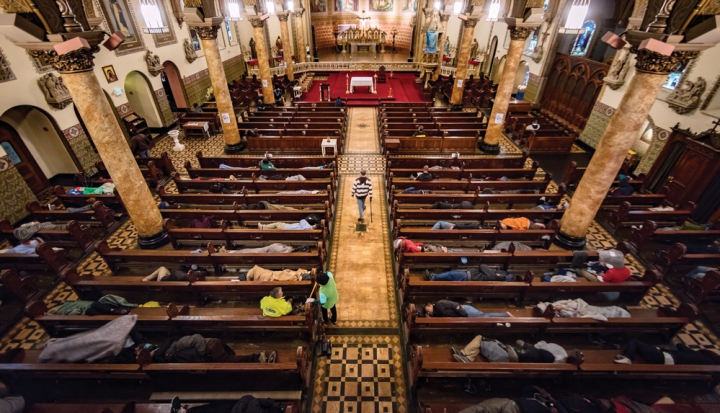


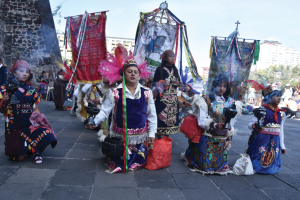
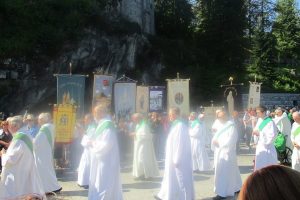
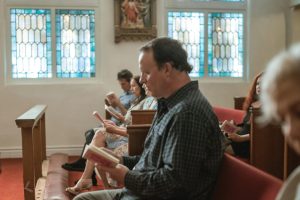




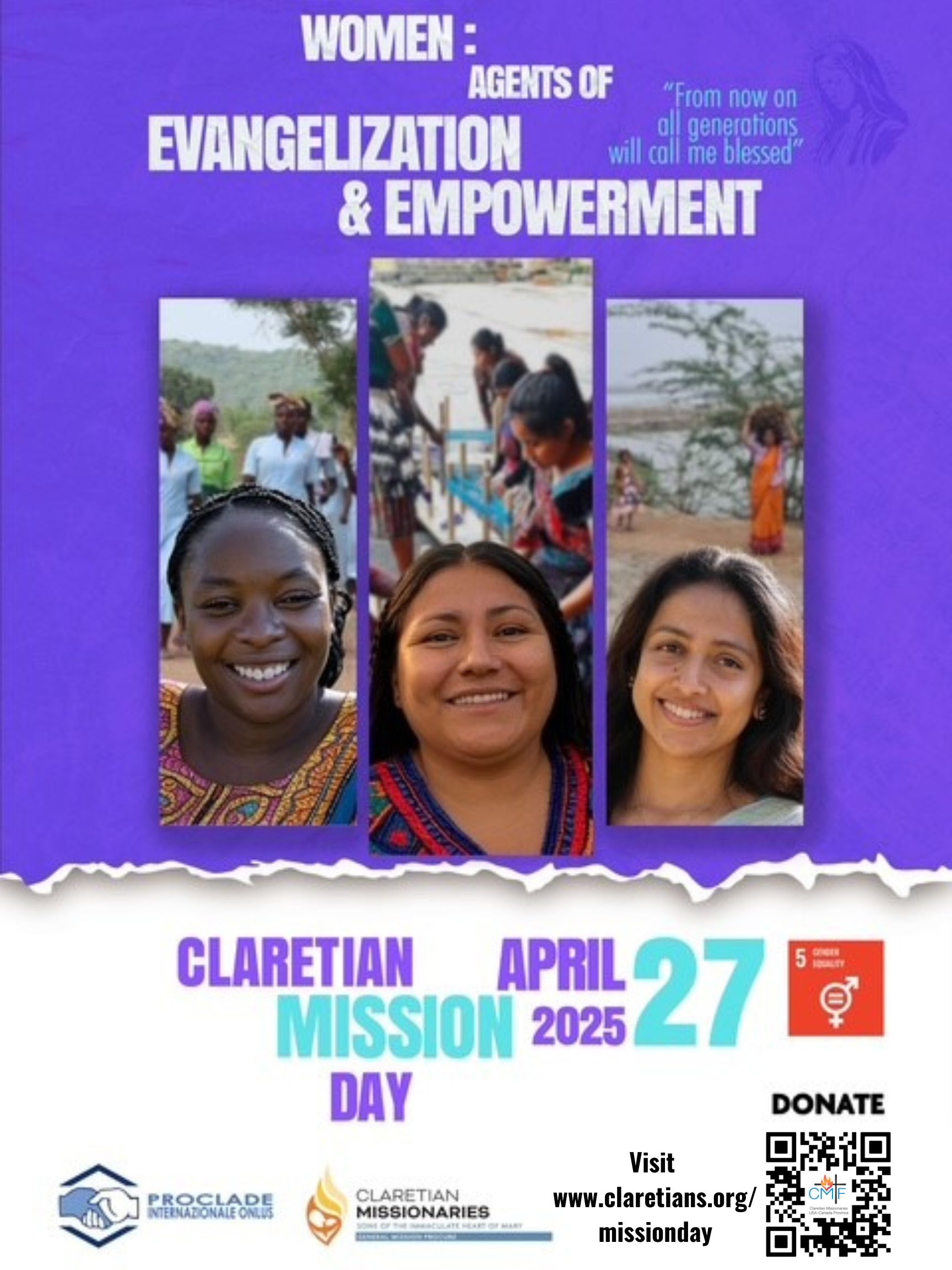
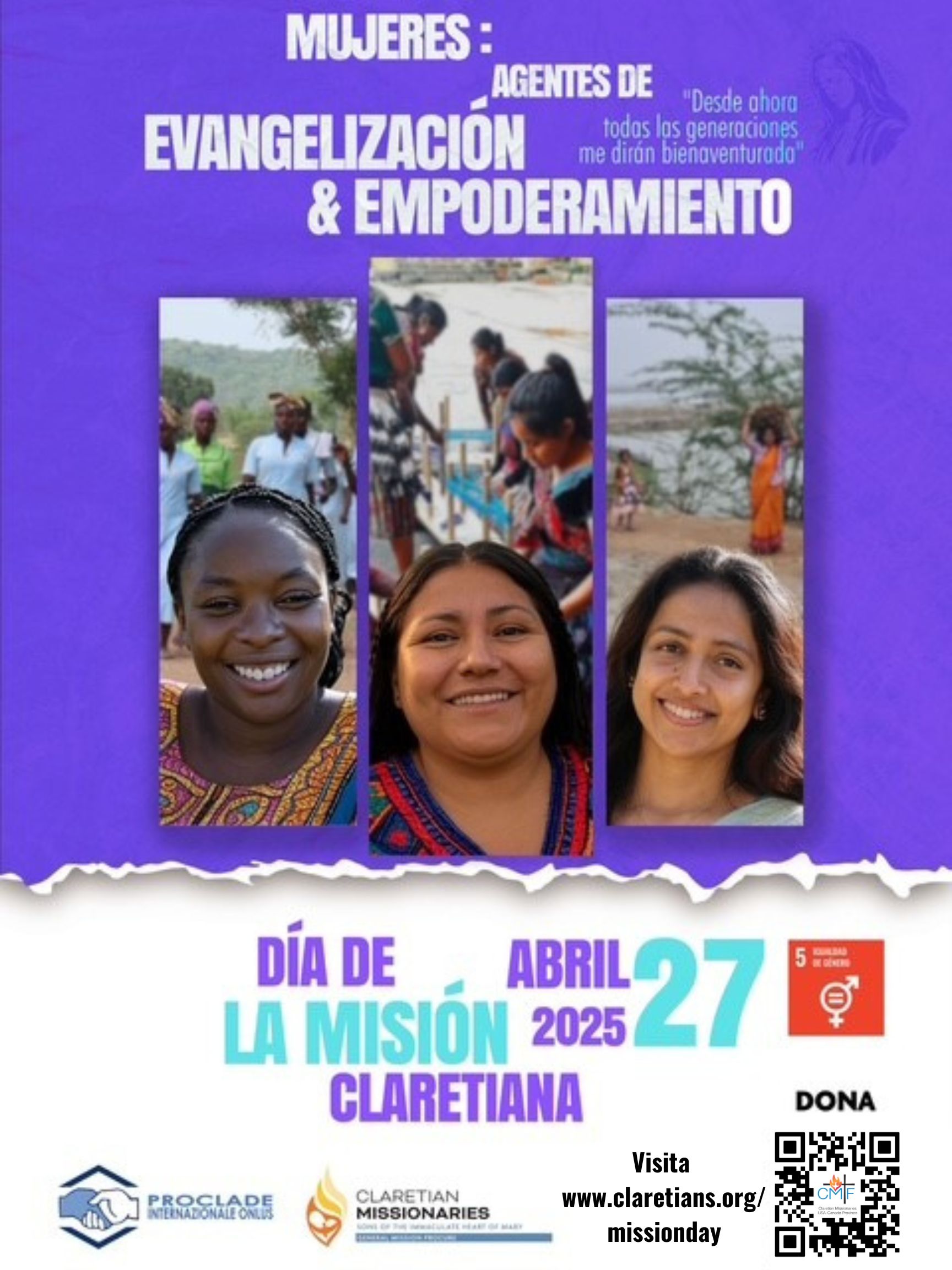
Add comment